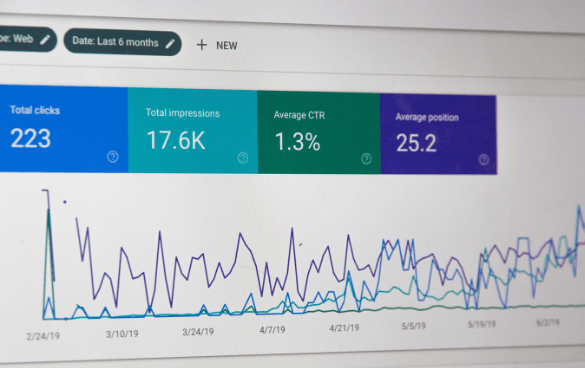Reliable Techniques for "Remarketing" In Google Analytics
Using Remarketing in Google Analytics: A Comprehensive Guide
Harnessing remarketing in Google Analytics uses services a strategic side in getting to out to prospective clients. This overview will drop light on the important steps entailed in using the complete potential of remarketing in Google Analytics, leading to improved advertising outcomes.
Understanding Remarketing in Google Analytics
Remarketing in Google Analytics permits services to tactically target users who have previously engaged with their internet site or mobile application. By leveraging data from Google Analytics, organizations can develop tailored remarketing lists based upon customer habits, such as pages checked out, activities taken, or details goals accomplished. This powerful device enables organizations to re-engage with individuals that have revealed rate of interest in their solutions or products, inevitably enhancing the likelihood of conversion.
Understanding the various types of remarketing approaches is important for a successful campaign - What Is “Remarketing” In Google Analytics?. Google Analytics uses numerous options, consisting of conventional remarketing, vibrant remarketing, and remarketing listings for search advertisements (RLSA) Each kind serves a special purpose and can be tailored to meet certain advertising goals
Furthermore, examining the efficiency of remarketing campaigns is necessary for maximizing outcomes. Google Analytics provides important understandings right into the efficiency of different remarketing methods, permitting businesses to make data-driven decisions and refine their targeting method. By constantly keeping track of and readjusting remarketing efforts based on analytics data, businesses can optimize ROI and drive success in their advertising campaigns.
Establishing Remarketing Campaigns

After establishing audience listings, the following action is to link Google Analytics with Google Ads. By linking these two systems, services can flawlessly transfer target market listings from Google Analytics to Google Advertisements for remarketing functions. This integration allows for even more accurate targeting and much better campaign efficiency.
When the accounts are connected, services can produce remarketing campaigns in Google Ads utilizing the audience details previously defined in Google Analytics. These projects can be tailored with particular advertisement creatives, messaging, and bidding process techniques to effectively re-engage with past visitors and drive conversions. By following these steps, services can leverage the power of remarketing to boost their advertising and marketing efforts and boost ROI.
Using Target Market Segmentation Strategies

Predefined sectors in Google Analytics permit you to rapidly evaluate usual target market groups like brand-new customers, returning customers, or users who finished a specific goal on your web site. Customized segments, on the other hand, allow you to develop unique segments based on particular requirements that are important to your service purposes. Dynamic remarketing checklists instantly readjust based upon customer behavior, showing customized advertisements to individuals that have engaged with your website specifically methods.
Studying Remarketing Efficiency Metrics
Upon reviewing the efficiency of remarketing campaigns in Google Analytics, the evaluation of essential efficiency metrics offers useful insights into audience interaction and conversion rates. By delving into metrics such as click-through prices (CTR), conversion prices, expense per procurement (CERTIFIED PUBLIC ACCOUNTANT), and return on advertisement spend (ROAS), marketing experts can determine the success of their remarketing efforts. Analyzing these metrics allows online marketers to enhance campaigns, improve target market targeting, and designate spending plans properly to boost overall remarketing performance.
Optimizing Remarketing Methods
When refining remarketing approaches in Google Analytics, concentrating on audience division is critical for attaining campaign success. By separating your audience right into specific sectors based upon their behavior, demographics, or rate of helpful hints interests, you can customize your ads a lot more efficiently to every team. This targeted strategy enhances the probability of involving individuals that have actually currently revealed rate of interest in your product and services, resulting in greater conversion prices.
Another essential element of optimizing remarketing techniques is constantly testing and refining your campaigns (What Is “Remarketing” In Google Analytics?). A/B testing various advertisement creatives, messaging, or deals can aid you determine what reverberates finest with your target market and drives the most conversions. By examining the efficiency of these examinations in Google Analytics, you can make data-driven decisions to enhance your remarketing efforts additionally
Moreover, leveraging dynamic remarketing can dramatically boost your project results. This attribute allows you to show tailored advertisements to customers based on their previous interactions with your website, showcasing service or products they have formerly seen. By supplying customized material to users based upon their passions and habits, dynamic remarketing can help raise involvement and drive conversions.
Verdict
To conclude, using remarketing in Google Analytics is a calculated method to target individuals our website who have actually formerly engaged with a website. By producing tailored target check this market listings and utilizing target market segmentation methods, organizations can optimize remarketing advocate enhanced conversion prices. Assessing performance metrics and continuously enhancing strategies are crucial for maximizing the performance of remarketing initiatives.
Google Analytics offers numerous alternatives, consisting of conventional remarketing, dynamic remarketing, and remarketing checklists for search ads (RLSA)After establishing up audience listings, the next step is to link Google Analytics with Google Ads. By connecting these two platforms, services can effortlessly transfer audience checklists from Google Analytics to Google Ads for remarketing objectives.Once the accounts are connected, businesses can produce remarketing campaigns in Google Ads using the audience lists previously defined in Google Analytics.When refining remarketing approaches in Google Analytics, focusing on audience division is extremely important for accomplishing project success.